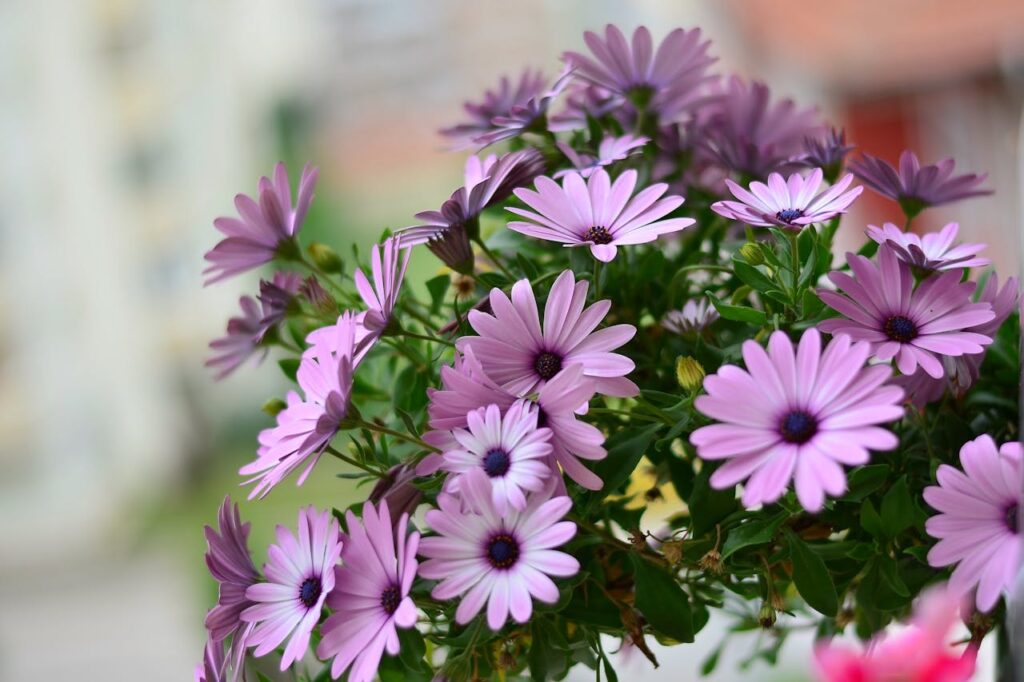
Extend your garden’s beauty with these 10 Top Flowers to Plant in August for Late Summer Charm. Discover blooms that bring charm and color to late summer
10 Must-Have Flowers to Plant in August for a Blooming Paradise
Introduction
August is a very special month when the heat of summer gradually fades and the natural world takes on a gentle, golden hue. Adding fresh life to the garden now is such a delight. August is a creative month to re-energize your garden with flower planting.
In addition to improving the garden’s aesthetic appeal, planting flowers now will give you a chance to maintain your garden throughout the upcoming, colder months. In addition, you will be happy to see how your garden is decked when fall arrives at the end of August.
Why August is the Perfect Time to Refresh Your Garden
In nature, August is a unique month when the last of the summer’s warmth slowly gives way to the crisp autumn air. This is the ideal time of year to plant fresh flowers in the garden. Newly planted flowers have less stress when the soil cools down, and the warm soil promotes root development. By giving your plants a head start before the first frost, you can ensure that they will root well and flourish healthily by freshening up your yard now.
The Charm of Late Summer Blooms
The flowers in late summer possess a characteristic appeal that is distinctive and extraordinary. These flowers are audacious and resolute representatives of the garden; as the sun sets, they bloom magnificently. Their subtlety and profundity in color provides the garden with a distinct dimension in its end-of-summer landscape that gives it new life and character. The last burst of beauty that these blooms provide just before fall sets in contrasts sharply with the passage of time between seasons.
How Planting in August Sets Your Garden Up for Success
Planting in August not only beautifies your garden today, but also ensures that you achieve optimum results later. When flowers are planted at this time of year, they can develop strong root systems to support good growth and ensure abundant blooms in the coming months. Putting flowers during this month will also enable you to choose those which do well under cool climatic conditions hence making it easy for them to adapt from summer to autumn.
Understanding Late Summer Planting
Benefits of Planting Flowers in August
Many advantages come with putting in the flowers during August. It is very important that a plant’s general health is enhanced through quick root development because of warm soil temperatures. These reduced transplanting shocks are brought about by cooler nights and they enhance adaptation by your flowers to their new living conditions. Moreover, you will have filled any spaces left by previous bloomers if you begin planting now hence there will be constant display of color in your garden.
Key Considerations for Flowers to Plant in August
When planting in August, it’s important to consider a number of elements, including soil moisture, exposure to sunlight, and the specific needs of the chosen flowers. To encourage healthy development, prepare your garden bed with nutrient-rich, well-drained soil. Watering your new plants on a regular basis will help them establish themselves, especially in the dry seasons. Also, be mindful of the amount of sunlight your garden receives at this time of year since it might affect the way your plants develop and flower.
How to Choose the Right Flowers for Late Summer
Finding flower kinds that complement your garden’s temperature and conditions while also being aesthetically beautiful is necessary when choosing late-summer blooms. Choose flowers that can survive the chilly nights that characterize late summer and that thrive in warm soil. Consider elements like height, color, and blooming time to create a well-balanced, eye-catching garden that will last until the first frost.
Soil Preparation Tips for Late Summer Success
Proper soil preparation is the cornerstone of successful August planting. Begin by removing any weeds or spent plants from your garden bed. Loosen the soil to improve aeration and drainage, and consider adding compost or organic matter to enhance fertility. If your soil tends to dry out quickly, mulching around your plants can help retain moisture and keep roots cool.
10 Gorgeous Flowers to Plant in August for an Eye-Catching Garden
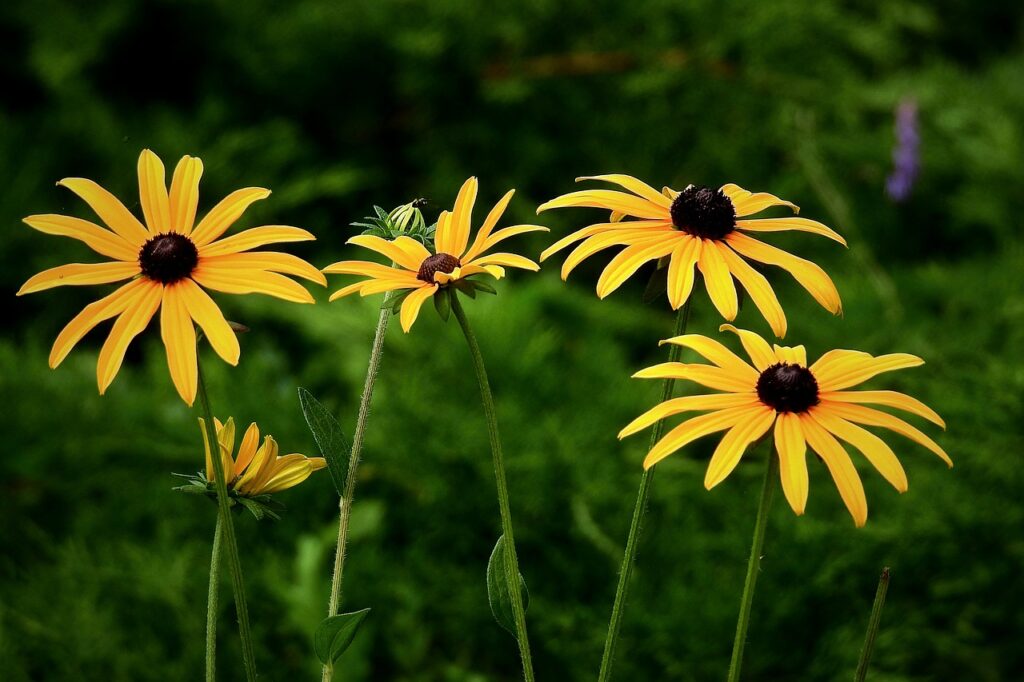
Flower 1: Bringing Vibrancy with Black-Eyed Susans
Why Black-Eyed Susans Thrive in Flowers to Plant in August
Black-eyed Susans, a brawny little flower awash with unabashed yellow bloom late in to the warmth of August. The strong, sunflower-like faces in bright golden-yellow and dark centers rise to offer the epitome of late summer. Drought-tolerant and low maintenance, these wildflowers are a great choice for planting in August.
Plant Black-Eyed Susans in These Conditions
Every tRuckload of blackEyed Susans wants to have at least eight hours or more a day of Hellebores sunlight and decent drainage. They can be grown in a variety of soil types, and are most productive in slightly acidic to neutral pH ranges. Place them in a spot with at least six hours of full sun to ensure they’ll flower their little heads off.
How to Care for Black-Eyed Susans Throughout the Season
After they are established, Black-Eyed Susans don’t need much care. Frequent deadheading will promote ongoing blooming and keep the plant from prematurely going to seed. When the weather is dry, give them a lot of water, but don’t give them too much because too much moisture might cause root rot.
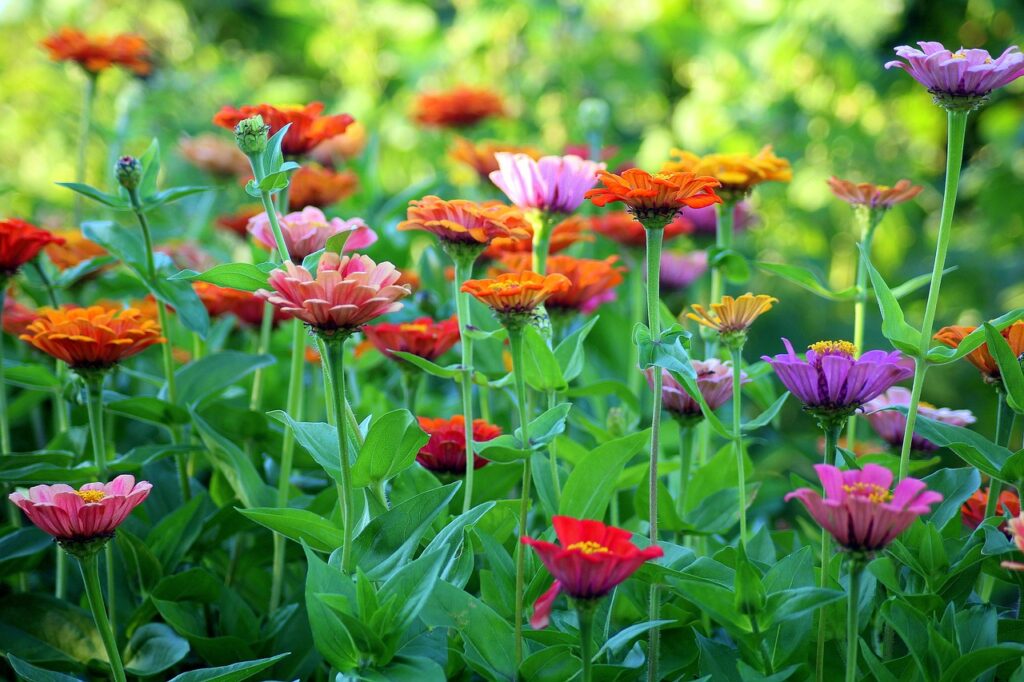
Flower 2: Zinnias for a Splash of Color
The Unique Appeal of Zinnias in Late Summer
However, one look at the colorful blooms of zinnias makes it easy to see why their eco-friendliness is easily overlooked. With their bright splash of color, they make a statement in the garden and keep blooming until frost. With their daisy-like look and tall, multiple branches, Shasta Daisies are great for garden beds or as part of a cut flower bouquet.
Zinnias Planting and Maintenance Tips
Position — Zinnias prefer to be grown in full sun with well-drained soil. Easy to look after, they need the odd deadheading to ensure continued blooms. Give them plenty of air space which aids in keeping diseases at bay, like powdery mildew.
Companion Plants that Pair Well with Zinnias
Zinnias pair well with other sun-loving flowers like marigolds and cosmos. Their bright colors also complement ornamental grasses, which add texture and contrast to the garden. For a striking display, consider planting zinnias alongside purple coneflowers or blue salvia.
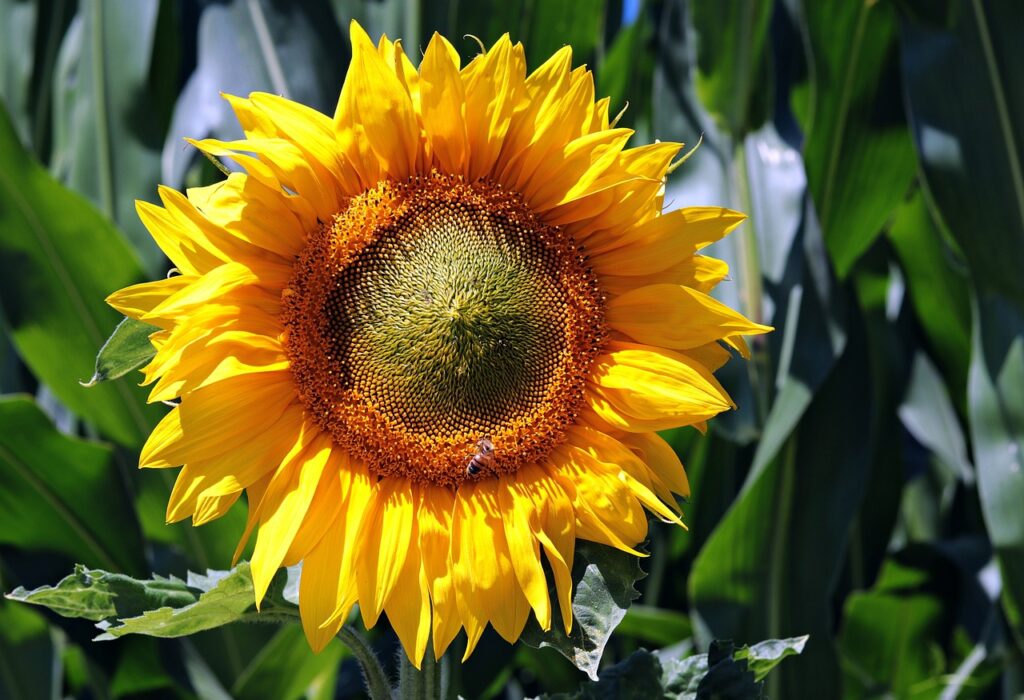
Flower 3: Sunflowers for Bold Blooms
The Reason You Need Sunflowers in Your Flowers to Plant in August Garden
Sunflowers are a signature flower of summer, and this simply is not an August garden without them. They are tall, reaching skyward in a bold and dramatic way − as bold and dramatic a statement that you can make with an ornamental plant. Sunflowers are also great for attracting pollinators, so they make a welcome and useful addition to any green garden.
How to Grow Sunflowers for Success
SunflowerHelianthus sp. Most sunflowers are very easy to grow as long as the soil is not water logged.Full SunWell-drained / Fertile Grow it in an open space where they can reach tall, and let them grow wild so as to avoid potential overpopulation. They grow quickly, water it regularly especially during dry spells.
How to Water and Feed Sunflowers
Sunflowers are highly demanding, though rather free feeding plants with a love for balanced fertilizer. Take care not to overwater, as this can cause fungal diseases and water deeply so that the roots are encouraged to grow deeper. Mulching the base of the plant can assist in retaining moisture and maintain cool roots.
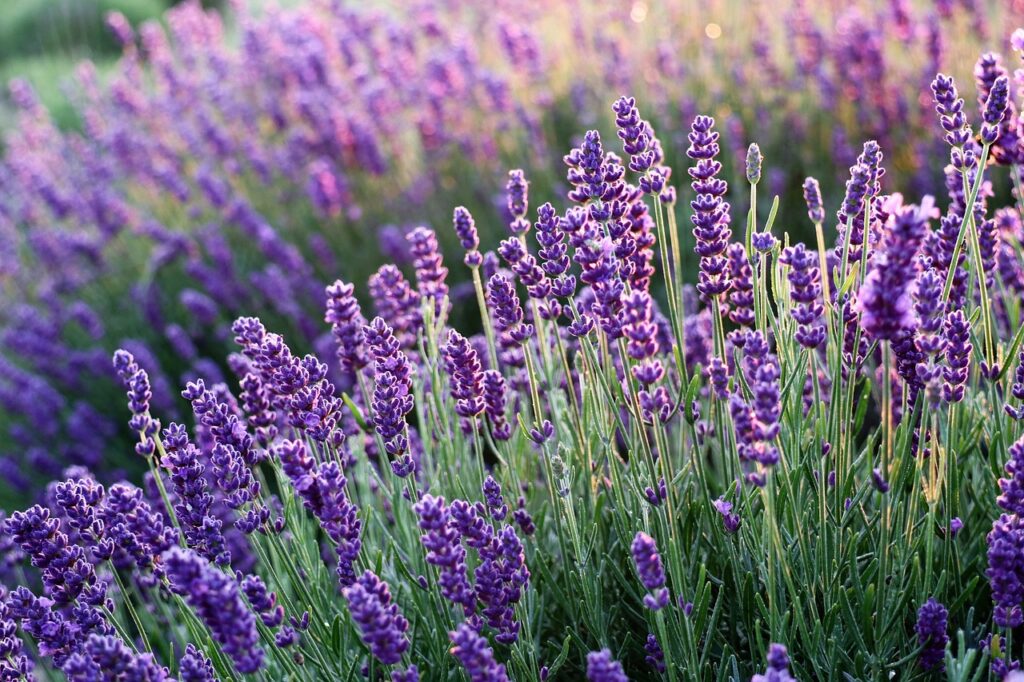
Flower 4: Lavender for Delicate Beauty
HOW TO ENCAPSULATE LATE SUMMER PERFECTION… WITH FREEZER-DRIED LAVENDER
Their fragrant silvery foliage and delicate purple blooms make Lavender the queen of grace. It adds a beautiful touch to any garden and is particularly lovely in late summer when its heads are blooming. Lavender is very desirable and attractive to pollinators, so it would be most beneficial in your garden.
Get Your Garden Bed Ready for Lavender.
Growing lavender in slightly alkaline, well-drained soil Photo credit: Serge Gruzinksi It prefers full sun, and performs best with good air circulation. Mix in some sand or gravel to improve drainage as Lavender will not tolerate waterlogged conditions leading the crown and roots to rot.
Long-Term Maintenance Advice for Optimal Lavender
Once established, lavender is a low-maintenance plant that needs very little watering. Every year, I give it a pruning to keep it in shape and promote new growth. Steer clear of excessive fertilizer as this may result in stunted growth and fewer blooms. Lavender may grow for many years if you give it the right care.
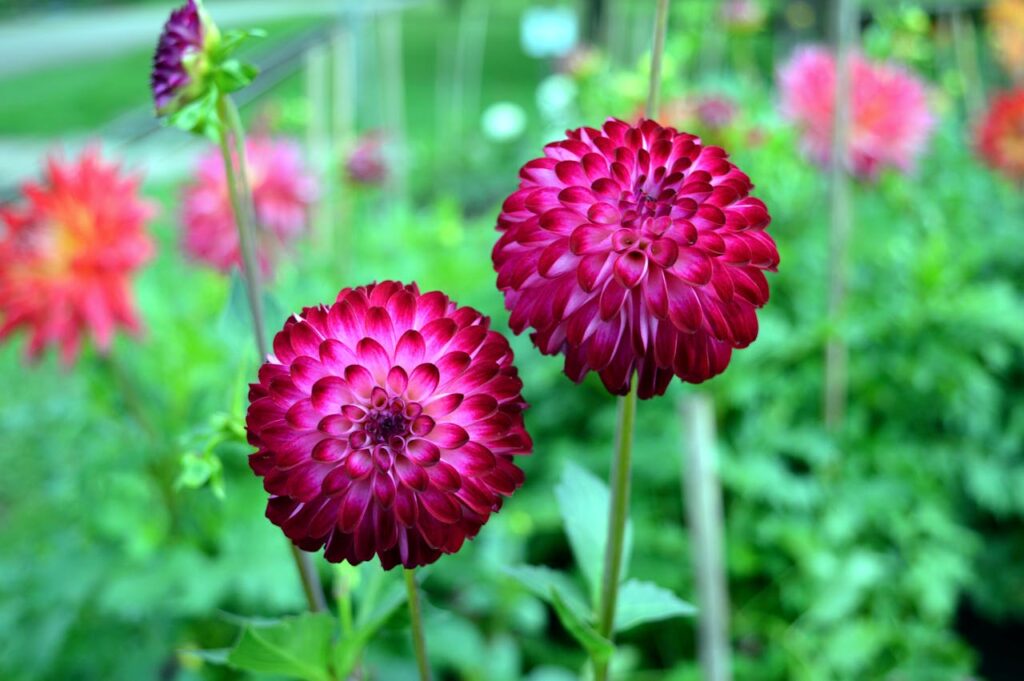
Flower 5: Dahlias for Continuous Blooms
How Dahlias Add Late Summer Charm
How Dahlias Add Summer Beauty They are known for their stunning flowers that come in a variety of shapes, sizes and colors. The end of summer is very nice and August is the first snow. Dahlias add elegance and beauty to any garden, making them a late-season plant.
Easy ways to flower plant acid in August
Dahlias prefer full sun and well-drained soil enriched with organic matter. Plant in a sunny location with good air circulation and provide a base or support for taller species. Water regularly, but avoid wetting the leaves to prevent fungal diseases.
How to take care of canes in the fall
For plants to bloom well in the fall, deadheads use the flowers from time to time. This encourages the plant to produce more flowers than seeds. Fertilize monthly with a balanced fertilizer to support continued flowering and water the roots to keep the soil moist..

Flower 6: Delphiniums for Height and Drama
Enhance your garden with delphiniums
Delphiniums are the stars of the late summer garden, with their tall columns of blue, purple, pink or white flowers. I saw these spectacular plants add height and interest to a garden bed and create a stunning vertical element that draws the eye upwards. Delphiniums are perfect for the back of borders or as accents in mixed plantings.
Choosing the right location for delphiniums
Delphiniums grow in full sun to part shade and prefer rich, well-drained soil and They do better in colder climates and can struggle in areas with hot, humid summers. Plant in a location that receives morning sun and afternoon shade to protect from the heat of the sun..
How to Prune and Support Delphiniums
Delphiniums can get very tall, so it’s important to provide support to prevent them from falling over. Use stakes or plant supports to lift them up, and tie the stems tightly to the supports as they grow. After the first bloom, we cut the flower stalks to encourage rebloom later in the season..
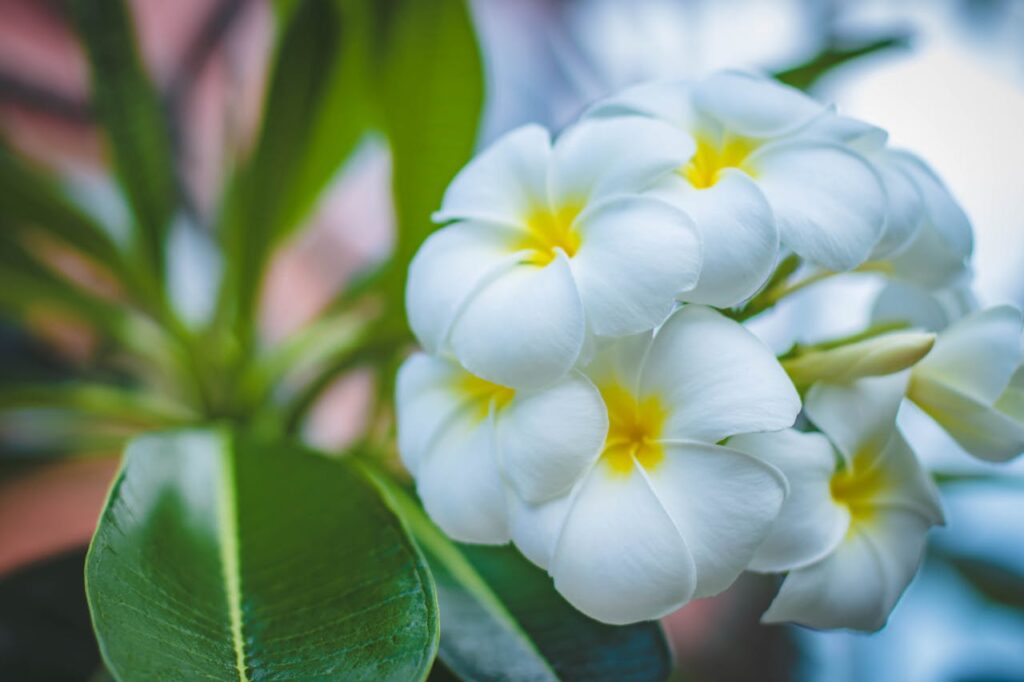
Flower 7: Gardenias for a Fragrant Garden
Why it’s a good garden to Flowers to Plant in August
Gardenia is known for its sweet fragrance and dark green leaves. Their creamy white flowers add a splash of color to any garden and are perfect for planting in August. The plants thrive in hot, humid areas in late summer, so they are ideal for southern gardens.
Gardenia planting and care methods
Gardenia likes acidic soil, well-drained and planted in a morning and evening shade. They are sensitive to changes in soil pH, so testing and soil amendments are important. Water deeply and keep the garden evenly moist to keep the roots cool and moist.
How to use gardenia in garden design
Gardenia is a versatile plant that can be used in different garden environments. They make excellent ground covers, hedges and container plants. Their fragrant flowers are ideal for planting along parks and walkways, where they are fragrant..
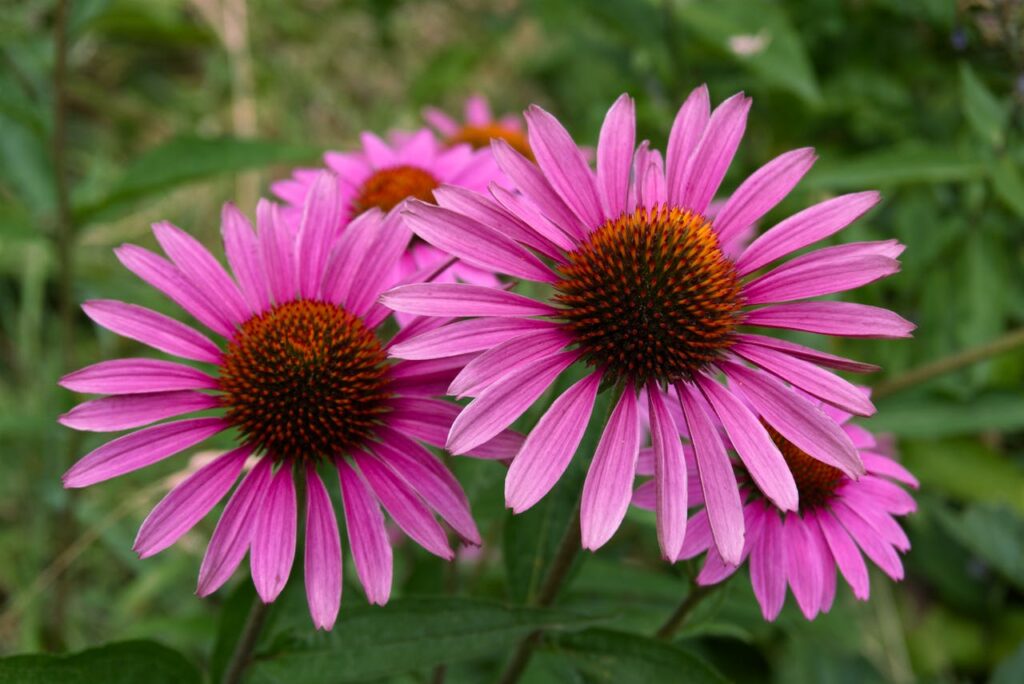
Flower 8: Echinacea for Pollinator Appeal
Attracting Bees and Butterflies to Echinacea
Echinacea or coneflowers are magnets for pollinators, attracting bees, insects, and even hummingbirds to your yard. The enormous, daisy-like flowers with center cones are both attractive and utilitarian, delivering nectar and pollen to a range of helpful insects.
Tips for Planting Echinacea in Flowers to Plant in August
Echinacea is a sturdy plant that prefers full sun and good soil. After establishment, it is well-drained and requires minimal maintenance. Plant echinacea in groups for optimum visibility, and water frequently during the first growing season to help the plants establish a strong root system.
How to Keep Echinacea Healthy and Vibrant
To maintain Echinacea’s health, sterilize the blossoms on a regular basis to stimulate continuous growth. Echinacea is pest-resistant, but keep an eye out for aphids and other typical garden pests. Cut the plants to the ground toward the end of October to prepare them for winter.
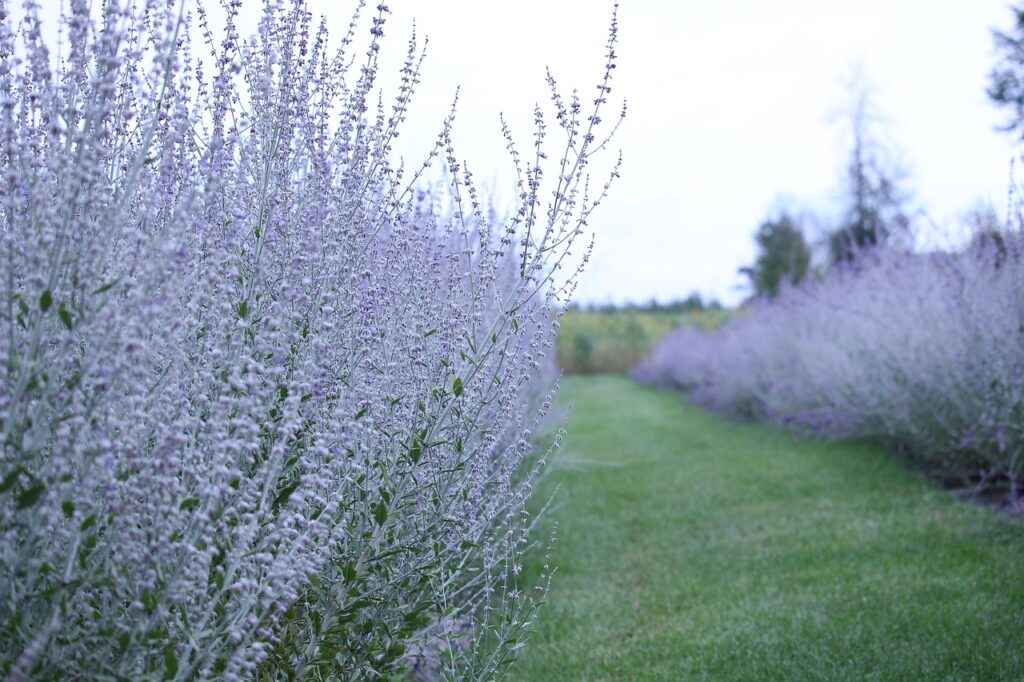
Flower 9: Russian Sage for Late-Season Resilience
How Russian Sage Thrives in the Heat of August
Russian sage is a hardy, drought-tolerant plant that blooms in the heat of August. The lavender-blue flowers and crazy flowers add elegance to the garden, and the silver-gray leaves contrast with other plants.
Russian sage is great for bringing seasonal color to your garden
Prepare your garden for planting, preferring full sun and rich soil. It is very resistant to soil conditions and can grow in sand and rock. Add organic matter to the soil before planting to increase drainage and production. Allow the plants to spread, spacing the plants 2 to 3 feet apart..
Best Ways to Care for Russian Sage Through the Season
Russian oak requires little maintenance once established. Water during long dry periods, but avoid overwatering, as the plant is susceptible to root rot in wet areas. Prune stems in early spring to encourage new growth and maintain a compact appearance..
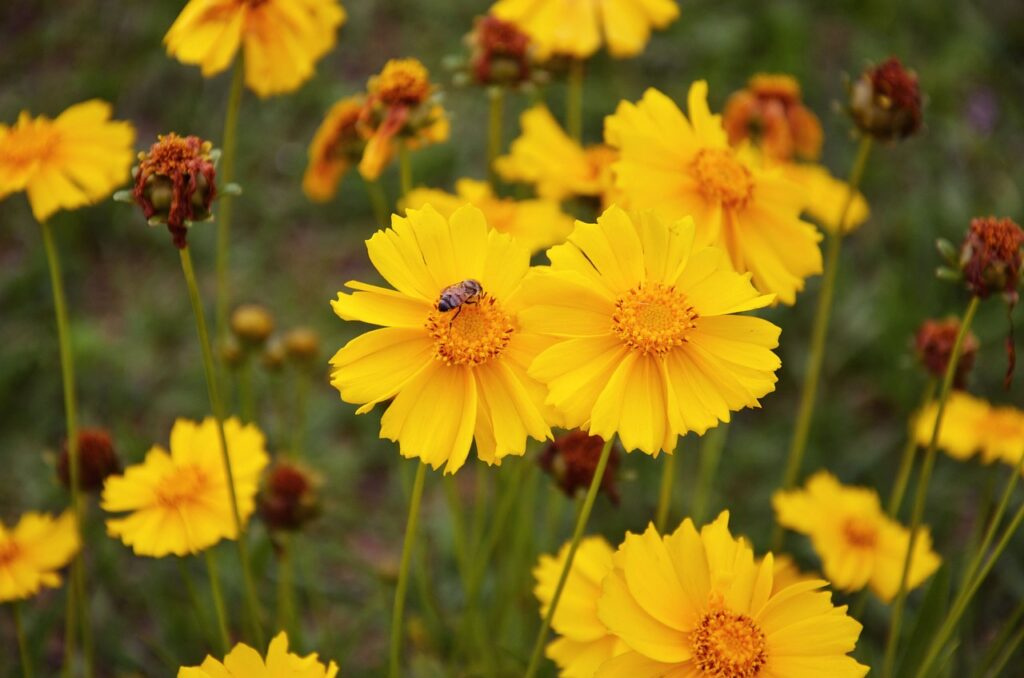
Flower 10: Coreopsis for a Pop of Color
Brighten up your garden with Coreopsis
Coreopsis, also known as tick, is a cheerful, easy-to-grow flower that lights up the garden with yellow or pink flowers. A productive flower that blooms from late spring to fall. Coreopsis are a great choice for filling holes in the garden or adding color to borders and containers.
Plant Coreopsis for maximum benefit
Coreopsis thrive in full sun and well-drained soil. Drought-tolerant, it can adapt to a variety of soil conditions, making it a great addition to any garden. Plant coreopsis in a mass for a bold display, or mix it with other plants for a natural look.
Coreopsis care is to prolong the flowering period
It encourages the plant to produce new flowers and prevents self-pollination. Coreopsis is a low-maintenance plant that requires little fertilization, but a light application of compost in the spring will help promote healthy growth..
Caring for Your August-Planted Flowers
Watering Strategies for Summer Flowers
Proper watering is critical to the success of August planted flowers. Low water encourages deep root growth, which helps your plants survive dry periods. Avoid overhead watering, which increases fungal infections, and avoid watering in the morning so that the leaves are dry before nightfall.Stimulating
Tips for Stronger Growth
Fertilizing flowers in late summer allows for vigorous and healthy growth. Use a slow-release, balanced fertilizer to provide nutrients throughout the growing season. Avoid over-watering, as the leaves will grow too much at the expense of the flowers.
How to protect your flowers from pests and diseases
At the end of summer pests and diseases increase, so be careful. Check your plants regularly for signs of problems and take action at the first sign of trouble. Whenever possible, use organic pest control methods such as neem oil or insecticidal soap to protect beneficial insects and the environment..
Maximizing the Charm of Late Summer Flowers
Garden design that blooms in late summer
A garden can bloom beautifully in late summer. To create depth and interest, consider planting flowers in layers, with taller plants in the back and shorter plants in the front. For consistent color, mix plants with different bloom times and use foliage plants to add texture and contrast.
Creative ideas for arranging and displaying flowers
Late summer flowers are great for cutting and arranging bouquets. Combine flowers with colors and textures to create stunning displays. Consider using unique containers, such as wine bottles or rustic buckets, to add style to your event.
How to Use Late Summer Flowers in DIY Projects
Late summer flowers can be used in a variety of DIY projects, from wreaths to bouquets to flower art aki. Dry your flowers to use in your fall decorations. You can also make special items like flower oil or handmade potpourri using flowers from your garden..
Conclusion
Summary of Great Flowers to Plant in August
Planting flowers in August is a wonderful way to extend the beauty of your garden into late summer and fall. From vibrant zinnias to beautiful lavender, these flowers will surely add beauty and color to your outdoor space.
A final tip for late summer gardening
Remember to choose flowers that thrive in warm soil and cool nights, and prepare your garden bed carefully for best results. Regular maintenance, including watering, fertilizing and fertilizing, will keep your garden healthy and vibrant throughout the season.
Encouragement to start planting to enjoy the beauty
There’s no time like the present to brighten your garden with these beautiful late summer flowers. Whether you’re an experienced gardener or just starting out, planting in August is a great way to enhance your garden and enjoy the beauty of the season. Enjoy your gardening!.
